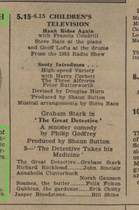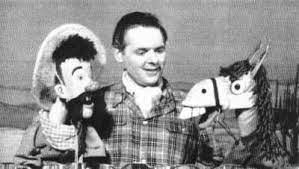This is from Geoffrey Negus on the BBC Alumni website:
Geoffrey Negus
One for OB types: much of my time is devoted to sorting material for an aviation history archive. I’m going through a bequest from an air traffic controller, who – not surprisingly? – often photographed control towers. He was a controller at the 1953 Farnborough Air Show. Gazing at a shot of the tower there, I noticed a figure on the roof. What a great vantage point!
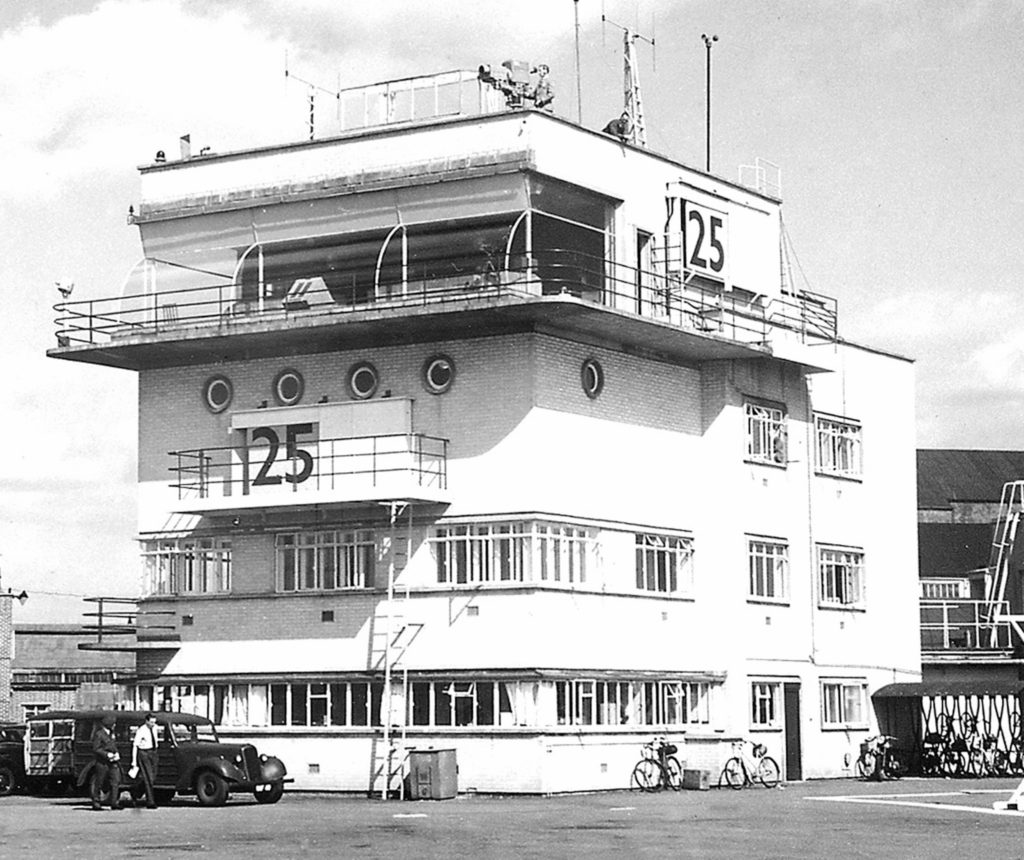
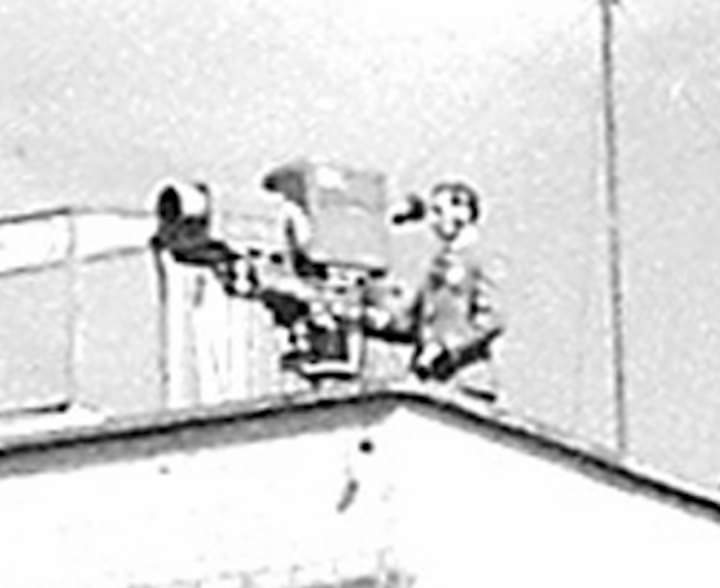
Graeme Wall
Nice picture.
Ian Norman
My uncle was a pilot in the second world war. He ended up working for B.O.A.C. / B.E.A. as the Final Examiner for newly trained pilots.
He had an 8mm silent camera, that he used to film his family etc, but he also air shows and other flight related activities. (One example is the view from the cockpit while landing at Hong Kong on the runway that extended out to sea).
Alan Taylor
I haven’t a clue about who might be operating the camera, but I was wondering about the lens.
1953 was pretty early for zoom lenses, but that doesn’t look like a Rank Taylor Hobson Varotal III 5:1 zoom lens, which was the only one I know of from then. What do you camera guys reckon was being used? A zoom, or a big prime lens?
There were probably a lot of ex-RAF aerial reconnaissance lenses available at that time which might be adaptable for TV cameras. That lens certainly does look like it’s a zoom, but the cameraman only appears to be using one hand, which suggests that it’s not a zoom … or maybe he’s just relaxing.
I wondered if there might be more info or pictures online. I couldn’t find any mention of Farnborough 1953 on the BBC Genome, which seemed odd. On YouTube there is a Movietone film of that year’s air show, and it includes some panning shots which include what might be TV camera scaffolding towers, but it was too blurry to make out any detail. Plenty of nice shots of aircraft of that time for anybody interested in such things.
David Brunt
Farnborough 1953 in BBC Genome
14:50 The Farnborough Air Display
Sat 12th Sep 1953, 14:50 on BBC Television
The world’s greatest display of aircraft, ranging from lightweight helicopters to supersonic fighters, together with giant airliners and bombers of the future.
Organised by the Society of British Aircraft Constructors.
From the Royal Aircraft Establishment’s Headquarters at Farnborough.
Contributors
Commentator: Peter Dimmock
Presented for television by: Alan Chivers
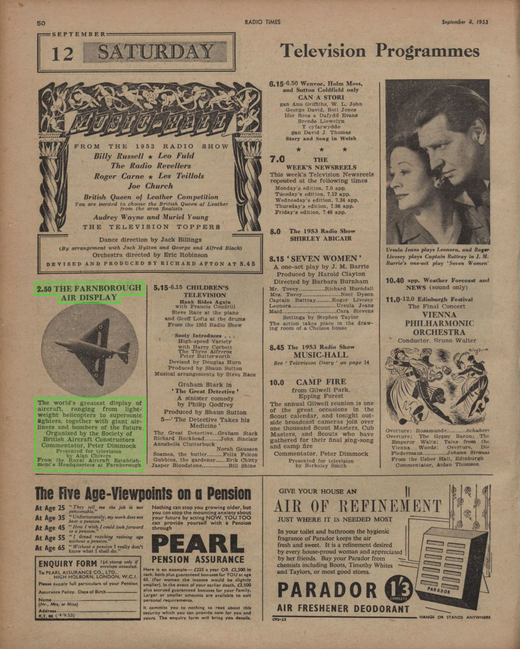
Simon Vaughan
I think it’s a Watson zoom lens. We had one on display in Studio A as part of the temporary TV museum at Alexandra Palace. I do have a photograph of it on display, but I’m struggling to find it.
Here is a photograph of the one held by the Science Museum, and a link to further photographs: Watson Varifocal Zoom
This one appears to have been used at the Coronation in 1953.

“… Watson varifocal lens Model 75/6.7 (No 206), manufactured by Watson & Son, Barnet, London, England, 1948. Example of a television camera zoom lens, to fit a Pye Mark III camera. Used to film the Coronation of Queen Elizabeth II in 1953…”
Alan Taylor
Yes, [the lens in the photo at top of this page] looks exactly like the Watson zoom. The Farnborough Air show was in September, so it was only a few months after the Coronation. It could even be that very same lens as the one now in the Science Museum collection.
However it’s not quite that simple. The Science Museum say that the Watson lens was used with a Pye Mk III camera, but when Peter Dimmock was interviewed about the Coronation, he said “…I’d managed to bully Broadcasting House to give us enough money to buy the image orthicon zoom camera from Marconi…”. Dimmock talks as though there was only the one zoom lens in use, so I don’t know whether it was a Marconi camera used with that Watson lens, or else a different zoom lens was used on the Coronation’s Marconi zoom camera. The other possibility is that Dimmock mis-remembered, but my hunch is that he did remember correctly and it definitely was a Marconi camera because he was quite specific about that detail.
Does anybody know for sure which camera and zoom lens were used? Any photographs taken at the time showing it? Zoom lenses were quite a novelty in 1953 so it might well have been photographed.
Some of my old OB colleagues told me that the Coronation was the first time a zoom lens was used on OBs and I had no reason to doubt them, but I have recently discovered this Wireless World article which states that a zoom lens was used on coverage of the 1949 Cup Final.

This particular zoom lens was placed in front of a prime lens. It could be used with any lens up to 2” in diameter, with an angle of less than 30° and offered a 4:1 zoom range.
Alec Bray
From the website: History of the BBC
The television camera position on the Victoria Embankment.
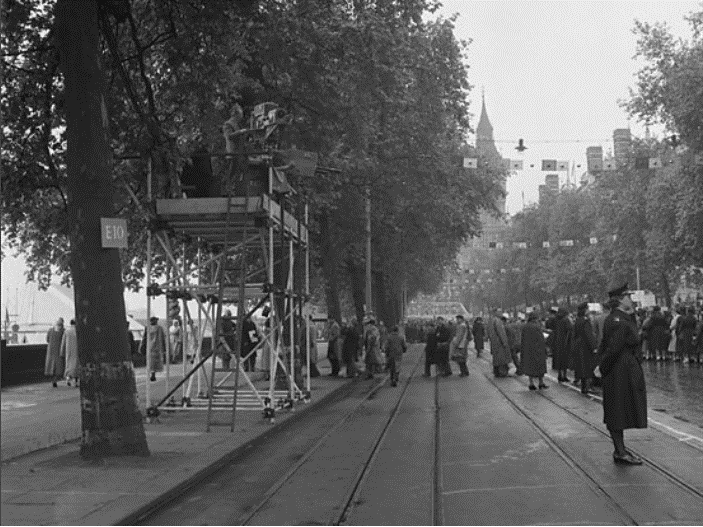
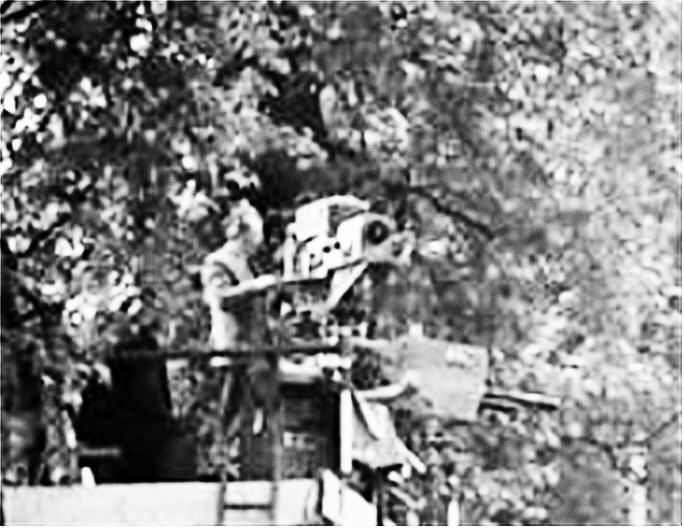
That is definitely a zoom lens on one of the cameras!
Dudley Darby
That certainly looks like a Watson zoom, but not on a Pye Mk. III. It looks more like a Marconi. The Science Museum lens is only a 2:1, but by 1952 Watson were producing 5:1 lenses.
Alan Taylor
Thanks Alec, that ties up the loose ends.
That’s clearly a zoom lens and looks to be the Watson. Accounts of coverage inside the Abbey only seem to mention one zoom lens, used for the camera over the West Door, which was able to maintain a continuous close up as the newly crowned Queen approached the door after the climax of the ceremony.
I had assumed that only one zoom was used on the Coronation broadcast, which seems to be true for the coverage within the Abbey. I had overlooked the possibility that one or more zoom lenses might also be used for exterior shots. It looks like the apparently conflicting accounts might be simultaneously correct. Presumably the Marconi zoom camera was used inside and the Pye / Watson zoom was used outside for the procession. The Watson lens in the Science Museum collection was used for the Coronation OB coverage, but was not for the coverage inside the Abbey, which is what I assumed they were claiming.
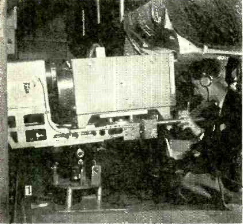
“Wireless World”
From “Wireless World” ” issue dated July 1953
“… The event saw the introduction of many more zoom lenses and a total of five were in service. Two of these were of the new Watson type with interchangeable back elements, giving a choice of two 5 :1 magnification ranges-with angles of view of 3 deg to 15 deg and 6 deg to 30 deg-while another, also a new design, came from Taylor, Taylor and Hobson with a range between 5 deg and 25 deg..”
“Wireless Word” issue dated July 1953 pp 317-319
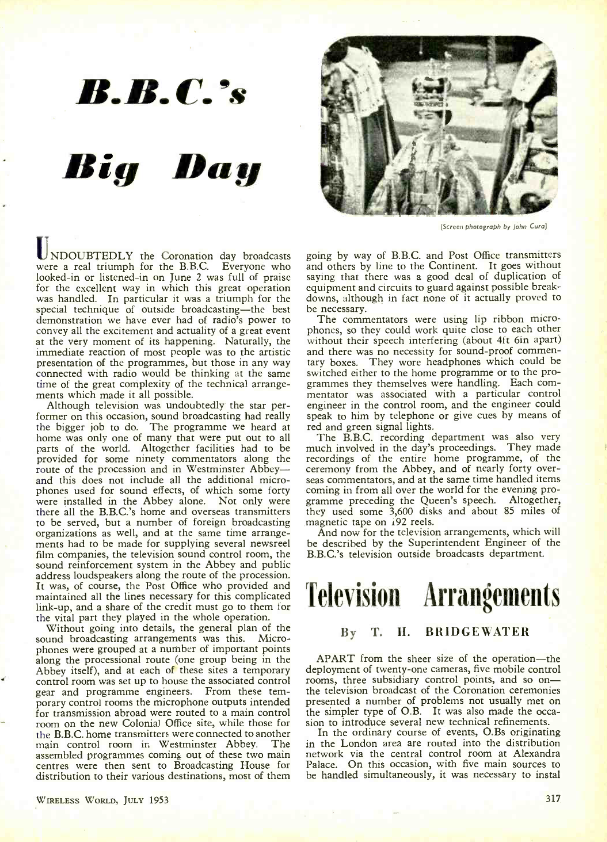
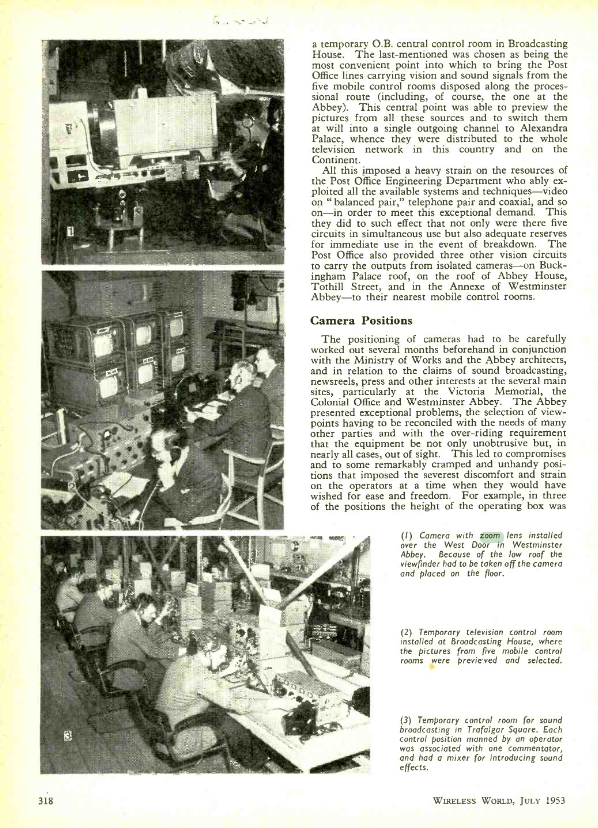
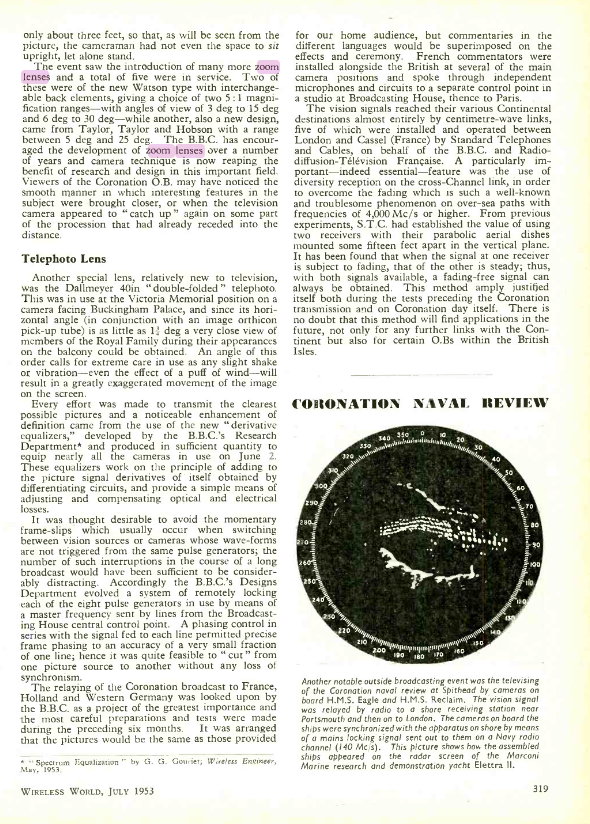
And finally…
Immediaely following the Farnborough Air Show it was Children’ Television – starting with “Hank Rides Again”
